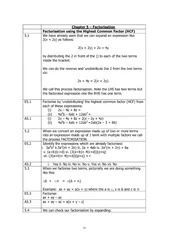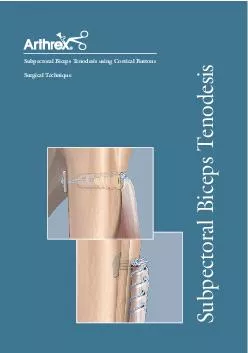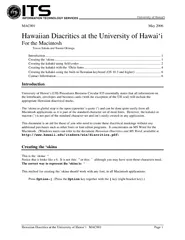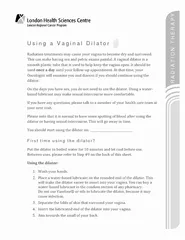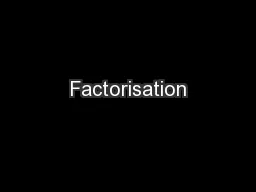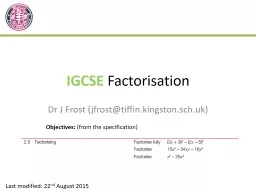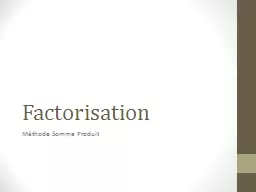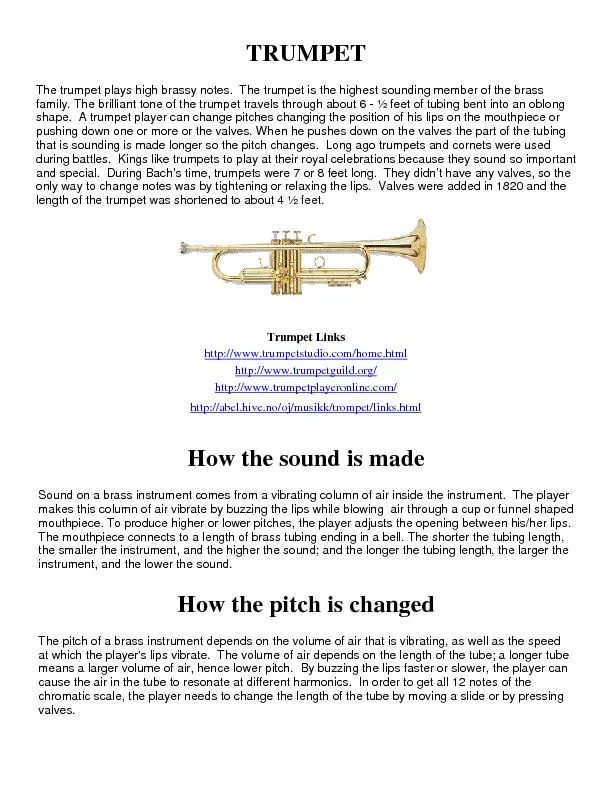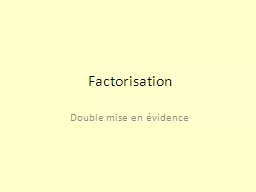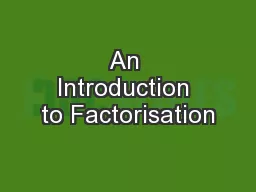PDF-Chapter Factorisation Factorisation using the Highes
Author : celsa-spraggs | Published Date : 2015-06-16
1 We have already seen that we can expand an expression like 2x 2y as follows 2x 2y 2x 4y by distributing the 2 in front of the to each of the two term s inside
Presentation Embed Code
Download Presentation
Download Presentation The PPT/PDF document "Chapter Factorisation Factorisation usi..." is the property of its rightful owner. Permission is granted to download and print the materials on this website for personal, non-commercial use only, and to display it on your personal computer provided you do not modify the materials and that you retain all copyright notices contained in the materials. By downloading content from our website, you accept the terms of this agreement.
Chapter Factorisation Factorisation using the Highes: Transcript
Download Rules Of Document
"Chapter Factorisation Factorisation using the Highes"The content belongs to its owner. You may download and print it for personal use, without modification, and keep all copyright notices. By downloading, you agree to these terms.
Related Documents

